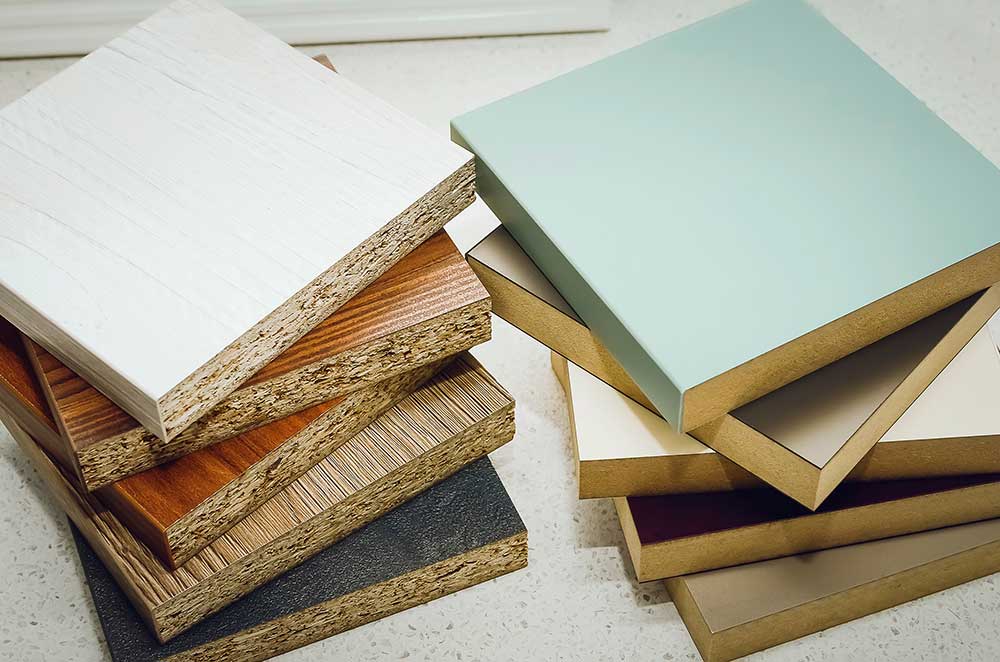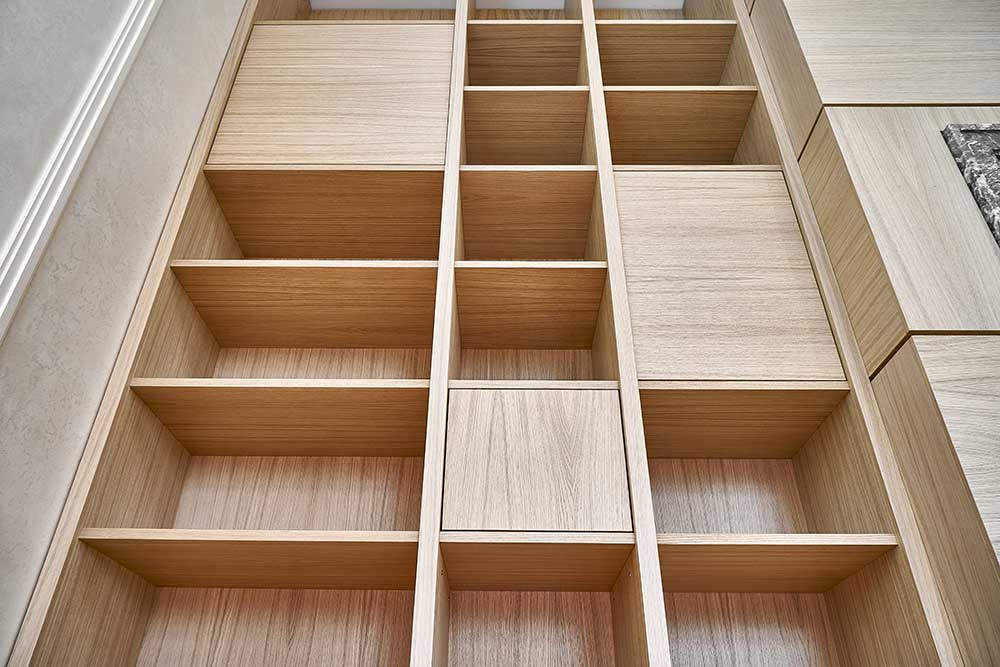In the heart of Greater Vancouver, where the skyline meets the mountains and the ocean kisses the shores, homes are more than just structures; they’re a reflection of individuality and personal style. Every corner, every nook, and every closet tells a story. But what happens when that story is muddled by clutter or limited by generic storage solutions? The essence of a home is often found in its details, and the material you choose for your closet is no exception. It’s not just about aesthetics; it’s about crafting a space that seamlessly marries functionality with beauty. Dive deep with us as we unravel the intricacies of closet materials, guiding you through choices that resonate with both your design aspirations and practical needs. Because when every detail matters, compromise isn’t an option. Let’s embark on this journey to discover how the art of customization can truly transform your space.
The Art of Customization: Crafting Unique Storage Solutions
In a world saturated with mass-produced items, the allure of something handcrafted, unique, and tailored to individual tastes is undeniable. When it comes to storage solutions, this principle holds even more weight. After all, every individual, every home, has its own set of needs, aesthetics, and stories to tell.
The value of local craftsmanship in closet design
Local craftsmanship is not just about supporting community artisans; it’s about embracing a level of quality and attention to detail that mass production often overlooks. The hands that craft locally understand the nuances of the Greater Vancouver lifestyle, the changing seasons, and the diverse architectural styles that grace our neighborhoods. This intimate knowledge translates into designs that are not only beautiful but also functional, ensuring that every inch of your closet space is optimized, every material chosen resonates with the environment, and every design element speaks to your personal style.
Combining functionality with aesthetics
A closet isn’t just a space to store belongings; it’s a canvas where functionality meets art. The right material can elevate a simple storage solution into a statement piece, a reflection of one’s personality and style. Whether you’re drawn to the sleek finish of engineered products or the timeless charm of natural wood, the key lies in harmonizing these materials with the overall design of your space. It’s about creating a balance where every shelf, every drawer, and every hanger has a purpose, yet nothing feels out of place or forced. In the realm of customization, it’s this marriage of form and function that stands as the true testament to quality and craftsmanship.
As we delve deeper into the world of materials, understanding their characteristics and benefits becomes crucial. After all, the foundation of any great design lies in the choices we make, choices that will shape the very essence of our spaces for years to come.

MDF vs. Plywood: The Heart of Quality and Durability
In the world of custom closets, the materials chosen play a pivotal role in determining not just the look and feel of the space, but also its longevity and resilience. Two contenders often stand out in this arena: MDF and Plywood. Both have their champions and critics, and both bring a unique set of attributes to the table. As we dive into the intricacies of these materials, it’s essential to understand their characteristics, benefits, and potential drawbacks, ensuring that your custom closet stands the test of time, both in style and substance.
Characteristics of MDF
Medium Density Fiberboard, commonly known as MDF, is a popular choice in the world of interior design, and for good reasons. Crafted from wood fibers combined with resin and pressed into sheets, MDF offers a smooth finish, making it a favorite for those seeking a polished look. But why is it so prevalent, especially in closet designs?
Why builders use MDF: Its uniformity. MDF lacks the knots and grains found in natural wood, allowing for a consistent finish. This makes it easier to cut, shape, and design, especially for intricate patterns and details.
Pros and cons of MDF for closets: On the upside, MDF is cost-effective, easy to paint, and provides a sleek finish. However, it’s essential to be aware of its limitations. MDF can be heavier than other wood products and may be susceptible to moisture if not adequately sealed.
When and where you should not use MDF: Given its sensitivity to moisture, MDF might not be the best choice for areas prone to dampness or high humidity. Proper sealing and maintenance can mitigate some of these concerns, but it’s crucial to consider the environment in which it will be placed.
Benefits of Plywood for Closets
Plywood, a multi-layered wood veneer, has long been a staple in construction and design. Its layers, or ‘plies’, are glued together, with each layer’s grain running perpendicular to the adjacent one, lending it strength and stability.
Durability and longevity of plywood: Thanks to its layered construction, plywood boasts impressive strength, making it resistant to cracking, bending, and warping. This durability ensures that closets made from plywood remain robust and functional for years.
Aesthetic differences between plywood and MDF: While MDF offers a smooth, consistent finish, plywood brings the charm and warmth of natural wood grains. This can add character and depth to a design, especially for those who appreciate the nuances of natural materials.
Plywood vs. laminate: Which is better? Both have their merits. While plywood offers natural beauty and strength, laminate provides a vast array of design options and can mimic the look of various materials. The choice often boils down to personal preference, budget, and the desired look and feel of the space.
As we journey further into the realm of custom closets, the choices we make today will echo in the sustainability of tomorrow. It’s not just about aesthetics or durability; it’s about making choices that resonate with our values and the world we wish to leave behind.
Sustainable Choices: Eco-friendly and Local Material Sourcing
In an era where our choices reverberate not just within the confines of our homes but ripple out to the world at large, sustainability has transitioned from a buzzword to a necessity. When curating the perfect closet, the materials we select carry with them a legacy of their origins, their production, and their eventual impact on the environment. By making informed, eco-conscious decisions, we not only elevate our spaces but also contribute to a more sustainable future.
Environmental impact of material sourcing
Every material has a story, a journey from its source to your home. This journey, from extraction to production to transportation, leaves an environmental footprint. Some materials, due to their manufacturing processes, may have a higher carbon footprint or may contribute to deforestation and habitat loss. Being aware of these impacts allows us to make choices that align with our values, ensuring that our dream closets don’t come at the planet’s expense.
The rise of sustainable materials in closet design
As awareness grows, so does the demand for materials that are not only durable and aesthetically pleasing but also kind to the Earth. Recycled materials, bamboo, and responsibly sourced woods are gaining traction in the world of closet design. These materials offer the dual benefit of reducing environmental impact while delivering the quality and beauty homeowners seek.
Local sourcing and its benefits
There’s a certain charm in knowing that the materials that shape your home have their roots close by. Local sourcing reduces transportation emissions, supports local economies, and often ensures a higher level of craftsmanship. Moreover, local artisans and manufacturers are attuned to the specific needs and preferences of the community, ensuring that the materials are perfectly suited for the local climate and lifestyle.
As we delve into the practicalities of building the perfect closet, it becomes evident that every choice, every detail, has implications beyond aesthetics. From the thickness of the shelves to the intricacies of installation, each decision we make shapes the functionality, durability, and overall experience of our custom storage solutions.

Practical Considerations in Closet Building
Crafting the perfect closet goes beyond selecting the right materials; it’s about understanding the nuances of design, installation, and maintenance. As we navigate the intricacies of building a custom closet, it’s essential to consider the practical aspects that ensure our storage solutions are not only beautiful but also functional and long-lasting. From the weight-bearing capacity of shelves to the art of installation, every detail plays a pivotal role in the overall success of the project.
Weight and Thickness Considerations
The backbone of any closet lies in its structure, and the thickness of the materials used plays a crucial role in determining its strength and durability.
How thick should a closet be? The ideal thickness often depends on the intended use and the materials chosen. For instance, hanging rods may require sturdier backing, while shelves for lighter items can be slightly thinner.
Plywood and MDF thickness for wardrobes and shelves: While both materials offer robust solutions, their optimal thickness varies. Plywood, known for its layered strength, can often be used in slightly thinner dimensions than MDF, which might require added thickness for weight-bearing purposes, especially in larger spans.
Installation and Maintenance
The beauty of a custom closet is truly realized when it’s seamlessly integrated into a space. However, the installation process and subsequent maintenance can vary based on the materials chosen.
Installation differences between materials: While plywood might be more forgiving with screws and nails due to its grain structure, MDF requires more precision to avoid splitting. Additionally, certain materials might need specialized tools or techniques for a flawless finish.
How to waterproof MDF shelves and other maintenance tips: Given MDF’s sensitivity to moisture, it’s essential to seal it properly, especially in damp environments. Using water-resistant sealants or paints can extend the life of MDF fixtures. Regular dusting, avoiding abrasive cleaners, and promptly addressing any spills or stains can also ensure that your closet remains pristine for years to come.
As we transition from the hands-on aspects of closet building, it’s time to delve into another crucial facet: the economics of it all. Crafting a dream space is an investment, and understanding the costs involved can empower you to make informed decisions that align with both your vision and your budget.
Cost Implications: Investing in Your Dream Closet
Every dream has its price, and when it comes to crafting the perfect closet, understanding the financial landscape is paramount. While the allure of a custom storage solution is undeniable, it’s essential to navigate the cost implications to ensure that your dream closet aligns with your budget without compromising on quality or aesthetics. Let’s delve into the economics of closet building, from DIY endeavors to the intricacies of labor costs and the premium of customization.
Is it cheaper to build your own closet?
The DIY route can be tempting, especially for those with a knack for craftsmanship. Building your own closet offers a sense of accomplishment and the freedom to tailor every detail to your liking. However, the costs can be deceptive. While you might save on labor, expenses for tools, materials, and potential mishaps can add up. Moreover, the time investment and the learning curve should also be factored into the equation. In some cases, the expertise and efficiency of professionals might offer better value in the long run.
Labor costs and factors affecting pricing
The craftsmanship process behind a custom closet is both an art and a science. Labor costs can vary based on several factors:
Complexity of the design: Intricate patterns, specialized fixtures, or unique configurations can demand more time and expertise, influencing the overall cost.
Geographical location: Rates can differ based on the cost of living and the demand for such services in a particular region.
Materials used: Some materials require specialized installation techniques or additional care, which can impact labor costs.
Why are custom closets more expensive?
Customization is synonymous with personalization, and this tailored approach comes with its price tag. Unlike mass-produced solutions, custom closets are designed to fit specific dimensions, preferences, and needs. The attention to detail, the quality of materials, and the expertise involved in bringing a vision to life all contribute to the premium cost. Additionally, the flexibility to choose finishes, fixtures, and design elements ensures that every custom closet is a unique masterpiece, reflecting individual tastes and lifestyles.
As we journey further into the realm of closet design, it becomes evident that the world of materials is vast and varied. From the timeless charm of natural woods to the modern appeal of engineered products, each material brings its own set of attributes, aesthetics, and advantages to the table. The key lies in understanding these nuances to craft a space that’s not only functional but also a true reflection of one’s style and sensibilities.

Exploring Other Popular Closet Materials
The world of closet design is as diverse as the materials that shape it. While MDF and plywood often take center stage in discussions, a plethora of other materials beckon with their unique attributes and aesthetics. From the rich textures of natural woods to the sleek finishes of engineered products, each material offers a distinct palette of possibilities. As we venture into this vast landscape, it’s essential to weigh the pros and cons, ensuring that the chosen materials not only meet functional requirements but also resonate with personal style and environmental considerations.
Wood vs. Engineered Products
The timeless allure of wood, with its natural grains and warm tones, has made it a favorite in interior design for centuries. On the other hand, engineered products, crafted with precision and technology, offer consistency and versatility.
Best wood types for closets (e.g., cedar, poplar): Cedar, renowned for its aromatic properties and resistance to pests, is a top choice for closets. Poplar, with its smooth texture and adaptability to various finishes, offers both durability and aesthetic appeal. Each wood type brings its own set of benefits, from the rustic charm of oak to the luxurious feel of mahogany.
The debate: Wire vs. wood closet shelves: Wire shelves, with their minimalist design and ventilation benefits, are perfect for areas requiring airflow, like laundry spaces. However, wood shelves, with their robustness and design versatility, provide a sense of warmth and elegance. The choice often boils down to the intended use of the space and the desired ambiance.
As we draw closer to the culmination of our exploration, it’s time to reflect on the myriad choices and their implications. Crafting the perfect closet is not just about selecting materials; it’s about making decisions that stand the test of time, decisions that harmoniously blend functionality with artistry. As we look back, let’s also envision the future, understanding the lasting impact of our choices on our spaces and the stories they tell.

Conclusion: Embracing Quality and Craftsmanship for Timeless Storage
The journey of crafting the perfect closet is akin to painting a masterpiece. Every stroke, every color, every choice contributes to the final picture. From the art of customization, where local craftsmanship marries functionality with aesthetics, to the heart of quality found in materials like MDF and plywood, we’ve traversed a landscape rich in possibilities. We’ve delved into the importance of sustainability, understanding that our choices today shape the world of tomorrow. Practical considerations, from weight to installation, have underscored the importance of details, while cost implications have reminded us that every dream, while priceless, has its price tag. And as we’ve explored the vast array of materials, from the warmth of natural woods to the precision of engineered products, one thing remains clear: the essence of a perfect closet lies beyond the surface.
Reflecting on the best use cases for each material
Every material, be it the aromatic cedar or the consistent MDF, has its unique strengths and ideal scenarios. The key lies in understanding these nuances, ensuring that the chosen material not only meets the functional requirements but also resonates with the desired ambiance and style.
The lasting impact of thoughtful material choices
Our choices are not fleeting; they leave a lasting imprint on our spaces. A well-thought-out material choice ensures that our closets stand the test of time, both in durability and design. It’s a testament to our values, our style, and our commitment to quality.
In the tapestry of home design, closets, often overlooked, emerge as powerful storytellers, narrating tales of individuality, craftsmanship, and thoughtful choices. As you stand on the cusp of making these decisions, remember that you’re not just picking materials; you’re crafting stories, memories, and a legacy. Embrace the journey, trust in quality, and let your closet be a reflection of your finest aspirations.
Ready to embark on this journey?


